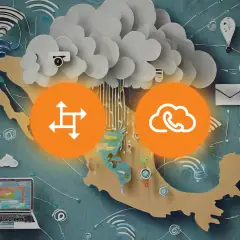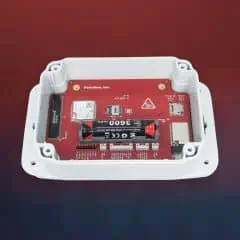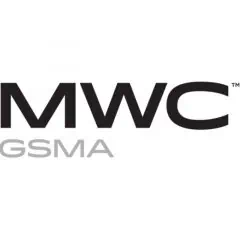
FAQ
There’s no question too big or too small. PortaOne is here to help. Browse our FAQ to find the answer to all your questions.
We offer 24/7 support to our customers. If you have any questions, the best way to contact our support team is by using this form. Phone conversations are not effective for technical support discussions (we can’t, for example, dictate the logs), and email is convenient for transferring screenshots, logs, and any other documentation we need to share with each other.
Chat can also be provided when needed as part of your PortaCare service. However, due to priority response scheduling, you will usually need to email us to pre-schedule a chat conversation. If you want fast access to real-time chat, there is also our PortaCare Pro option, which includes a dedicated Customer Success Manager. Visit our technical support page for more information on both support options.
Our 24/7 technical support team is fully able to support our telecom platform, along with certain hardware and software that has already been checked, tested, and approved to work with it. Any testing and troubleshooting of hardware and software that has not been tested with our products is done by a separate, dedicated team with specialized knowledge and skills – this type of work is called interoperability (interop). If you have outside hardware or software that needs interop testing with our platform, we can work together with your programmers or hardware providers to get to the bottom of the problem – there may be changes or new methods needed on their side, or on ours.
SLAs for services provided by PortaOne Support under PortaCare are written out in the contract we sign with you when you become a PortaOne customer. However, some troubleshooting may require involvement of development specialists, and the standard SLA cannot apply to their work, as each issue is unique. However, development tasks are also differentiated by severity and priority, and our support team makes sure these factors are included when they submit a task to our development team. If your task needs to be expedited, please be sure to involve your Customer Success Manager so it can be prioritized correctly.
Any kind of agreement we would arrange with you for the development of a new feature will depend on the complexity of the specific project. Once we have done a full business analysis and drafted a solution design, then we can discuss the parameters of the agreement with you for that feature, including the delivery time.
We strive to keep our API backward compatible – that said, during the “growth spurt” of our API (around MR60 to MR80, to be specific) we had to introduce many new methods and attributes and some of these changes (e.g., a new mandatory parameter) ended up breaking that compatibility. We are now in the process of ensuring that our product develops smoothly and accepts API requests in the older format – meaning that, in most cases, your app should still work after an update. The Important Notes documentation that accompanies each update will cover this area in detail, so it is very important to review them in order to avoid complications.
Since there can be applications outside of your zone of knowledge (e.g., a self-care portal written by your reseller) it may be impossible to validate them prior or during an update. In this type of situation, the safest approach is to use Dual Version. This will ensure that you are catching potential errors with a small group of customers, allowing you to continue running seamlessly on the older version until the application is adjusted to properly work with the new release.
We would also love for all of our customers to have a 100-percent-problem-free rollout of every new version of our telecom billing system, but sadly this is something that will never be possible in the real (and very complex) world. Every customer has a unique system of interworking products, and every end user is operating that system in their own creative and unexpected ways. Compatibility with added software or new hardware, issues with outside vendors, and the nuances of each individual production system make it impossible to predict exactly how it will all function together at both the operational and user levels after a given update.
Our QA team of course tests everything thoroughly before each release, but because of all these complexities, sometimes unexpected issues will crop up over the long term. What we can guarantee is that, when a bug does arise, we will work with you to fix it in a timely manner. And, for the safest possible rollout, you can opt for Dual Version, which will allow you to move your customers to the new system in small batches, and react immediately to bring a customer back to the old system if a bug crops up.
The best way to get dedicated attention from our 24/7 support team for “non-urgent” issues is to let us know what you plan to do in advance. That way, we can help make sure that everything goes smoothly before a problem ever arises. Get in touch with our support desk and discuss your plans with our team. We can schedule dedicated time with our technical staff, connect you with startup support, and work with you to configure your system quickly and effectively. This will save your time and help you achieve your goal in the most efficient possible way.
And if you do want access to real-time chat and other premium support credits and services – such as your own dedicated Customer Success Manager – check out our PortaCare Pro option.
We provide an unlimited license, which means that all of the features you see in the documentation for a specific product (for instance, PortaBilling) will be available to you free of charge when you purchase a license for it or sign up for it as SaaS. Moreover, any new features we add to that product will appear on your system after an update – again, without any extra fees.
Let us start with making clear what a feature is: it is functionality that is described in our product documentation. Any behavior of the product that is not recorded in the documentation is subject to change if product development or fixing a software issue requires that change. Some of these behaviors, convenient as they might be, may be unsafe and need to be addressed. You can imagine it like a shortcut you might take through a fence that has a hole in it. Then we fix the fence and close the shortcut, and now you have to walk all the way to the gate again. A fence cannot have a hole in it if it is to function well as a fence, and so it needed to be fixed, even if it was sometimes useful to you. But if you would like a “gate” put in where the “hole” was, then you have just discovered a great idea for a new feature. Contact us and tell us about it, and we can work with you on delivering it with one of the coming releases.
Unfortunately, no. If you are having problems with a functionality that we did not offer or intend, we cannot troubleshoot that. To avoid these issues, we strongly suggest that you get in touch with your Customer Success Manager to discuss any new functionality you would like to create, and work with us to make it happen. By bringing your ideas and wishes to us, we can work together to create a new official feature, one that is fully explained in our PortaOne documentation and backed up by our 24/7 support team.
That’s right – you can run PortaSwitch in a fully virtualized environment! In fact, deployment in a cloud datacenter via virtual machines is becoming more and more popular. There are a few requirements, however, as we want to make sure that your virtual infrastructure provides an environment where the standard tools and procedures PortaSwitch uses for managing IP addresses, running updates, and so on can be executed automatically without manual intervention or adjustments. So, here is the checklist for your virtual server supplier:
Can | Cannot |
You must install your own operating system on a virtual machine from an ISO image | You cannot pick more than one pre-defined and pre-configured OS |
Your virtual machine must have persistent storage on which several disk partitions can be allocated and their “bootable” status can be changed | You cannot upload a new version of your OS and make it bootable (though you can allocate storage volume) |
You must allocate at least two network interfaces to a virtual machine | You cannot use more than one network interface |
When a public IP address is allocated to a virtual machine, it will be assigned / visible on the network interface | The IP assigned to the network interface on virtual machine will be private, not public; public IPs will be managed by an external load-balancer |
To sum all this up, if you want to self-host PortaSwitch in the cloud, you can use any service with virtual machines that can emulate individual physical servers and that allow you (and our support team) to manage them using the already established and thoroughly tested tools for system configuration, monitoring, and performing software updates. You will not be able to use a cloud computing infrastructure such as AWS, which takes away most of the control. In order to run in a “real” cloud environment, PortaSwitch is available via a cloud SaaS option that runs in Oracle Cloud Infrastructure (OCI) managed by the PortaOne DevOps team.

















